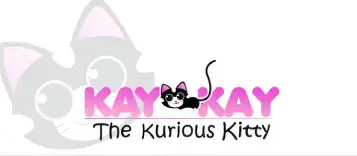
Strategies for Parents and Caregivers
Just think about this for a moment.... today's children will enter the future workforce that will have technology that hasn't been invented yet and the critical thinking strategies to solve those future problems. What's even more troubling is that current college freshmen will face new technology and associated problems that have not been identified by their third year in college. This is why instilling agile, critical thinking skills early are vitally important.
It is actually brain science!
Okay, I will put on my professorial hat now and explain how memory works. Memory is the output of critical thinking. The term ``memory`` is defined as the ability to consciously remember past experiences or previously learned information which depends on the hippocampal system. Think of the hippocampus as the sorter. Information enters the brain by visual or auditory means and the hippocampus selects the most important facts -- kind of like the headlines in the newspaper. Our emotional state affects the way we retain information and the accuracy with which the retention occurs. The amygdala is involved brain structure in and responsible for our emotional responses and the formation of emotional memories. The amygdala and the hippocampus, work together to form long-term memories. These two brain structures are activated following an emotional event and cross-talk with each other in the processing of memories.
Bring emotion into critical thinking.
People are emotional creatures and children even more so. You need to train children to manage their emotions before you teach critical thinking and problem solving to kids. This is the first step to effective problem solving. A child's disposition -- readiness and willingness to learn is important. Make sure your child is composed and calm before trying to find a solution to the problem.
Once your child regains control over his/her emotions, proceed to the next step of critical thinking and problem solving, that is, analyzing what exactly is the issue.
Once your child regains control over his/her emotions, proceed to the next step of critical thinking and problem solving, that is, analyzing what exactly is the issue.
All children struggle with the 'hard' part.
Every problem has a ‘hard’ part – the part that invokes and plays on your emotions. But once your child has mastered control over emotions, it is easier to see that difficult part. For example, Kay-Kay has gone to the county fair and has eaten all the sweet treats. As she heads home here tummy starts to hurt and she feels sick. The 'hard part' is the tummy ache. What are some options or choices Kay-Kay could have selected so that she wouldn't feel sick?
Help your child identify the hard part and what it is about the pain point that is tricky. This step is significant in teaching problem solving to kids, for every problem presents a unique, different challenge. What might be the tricky part of the problem for your child may be an easy part for you. Perspective differs from person to person and that is why individual analysis of the problem is important.
Help your child identify the hard part and what it is about the pain point that is tricky. This step is significant in teaching problem solving to kids, for every problem presents a unique, different challenge. What might be the tricky part of the problem for your child may be an easy part for you. Perspective differs from person to person and that is why individual analysis of the problem is important.
Look for solutions.
Parents and caregivers should ask open-ended questions like:
– What could be the solution?
– Are there more than one solution?
– You can use story books or movies as context. Ask if they have encountered a similar problem?
– How did the character in the story or movie solve the problem?
– Can a similar solution be applied to their real problem?
– If not, how can they change it to make it work for them?
Let children try their own solutions.
Adults learn more from their mistakes than their successes and that is the same for children. Let children try out their solutions and fixing errors to make them better.
Allow children to fail. Then allow them to try alternatives to arrive at the best possible solution. Remember, making mistakes and then reflects is a valuable learning opportunity.
Help the process of problem solving for children by asking them relevant questions relating to their solution. Always ask the 'why?'
Allow children to fail. Then allow them to try alternatives to arrive at the best possible solution. Remember, making mistakes and then reflects is a valuable learning opportunity.
Help the process of problem solving for children by asking them relevant questions relating to their solution. Always ask the 'why?'

